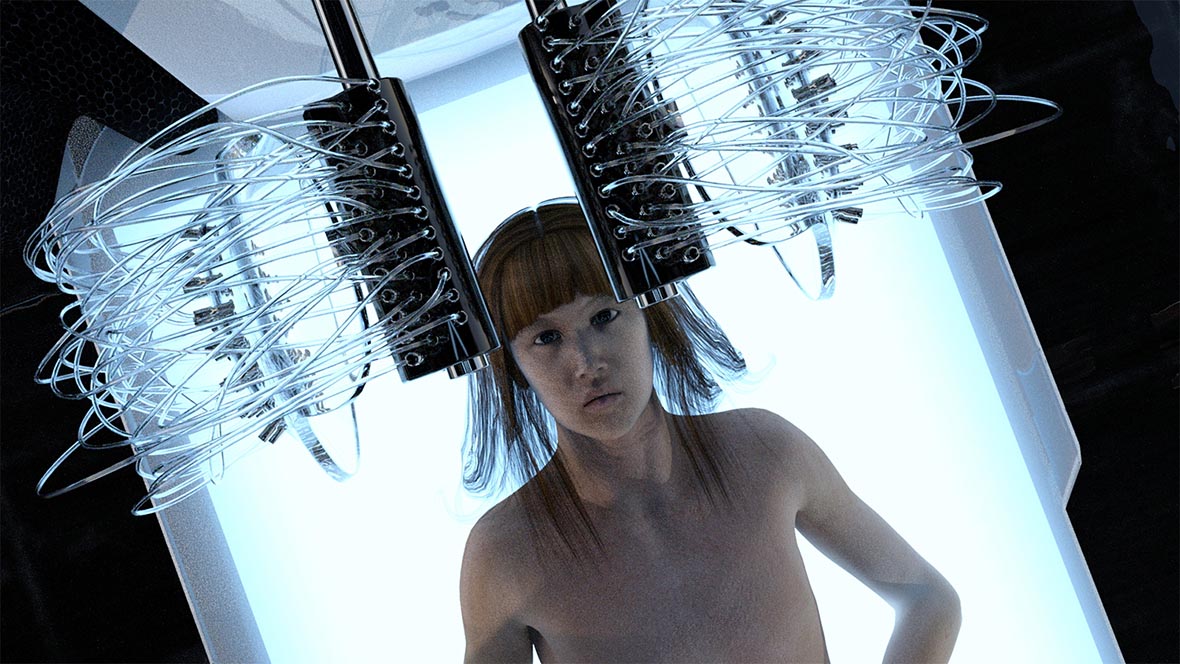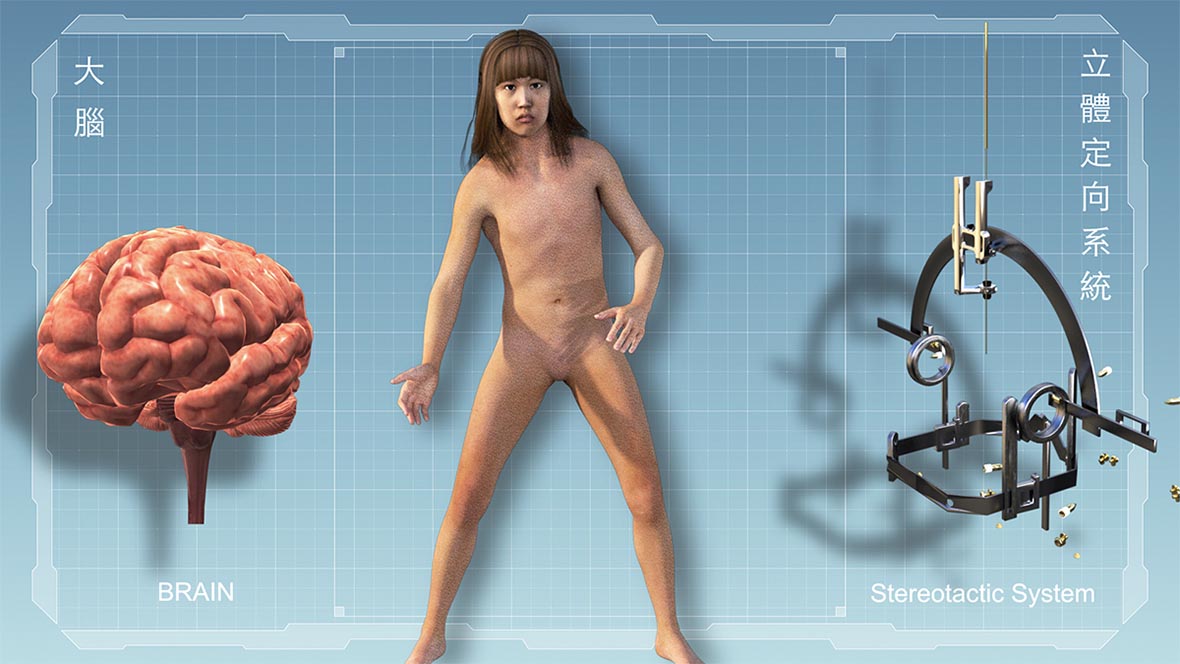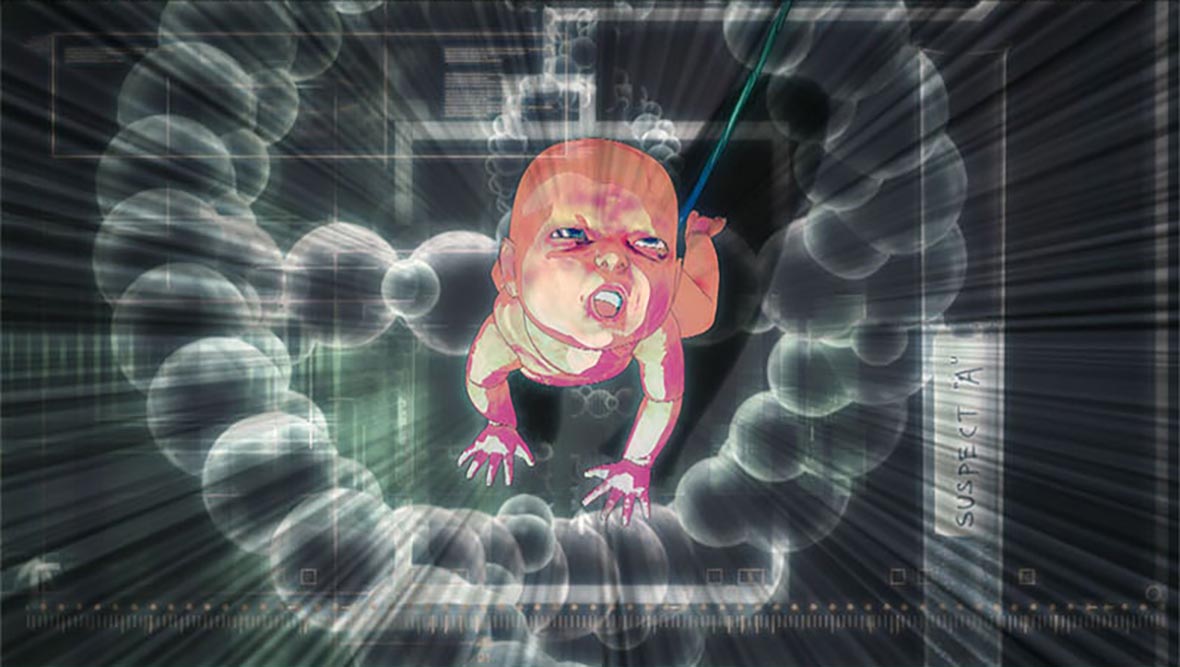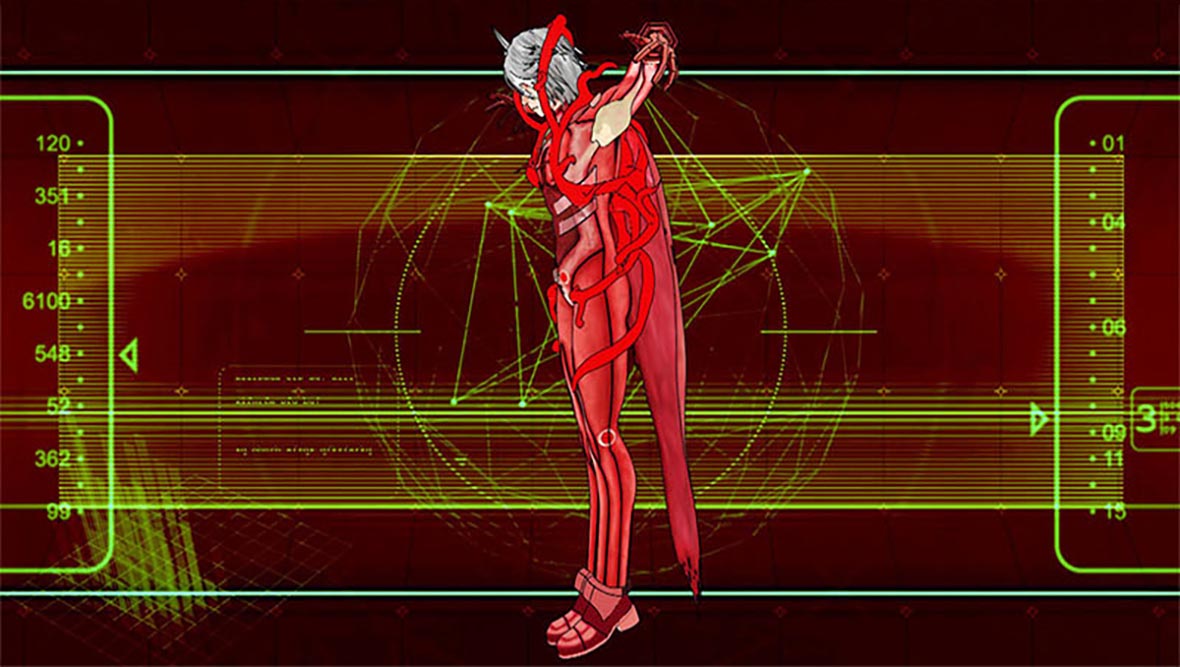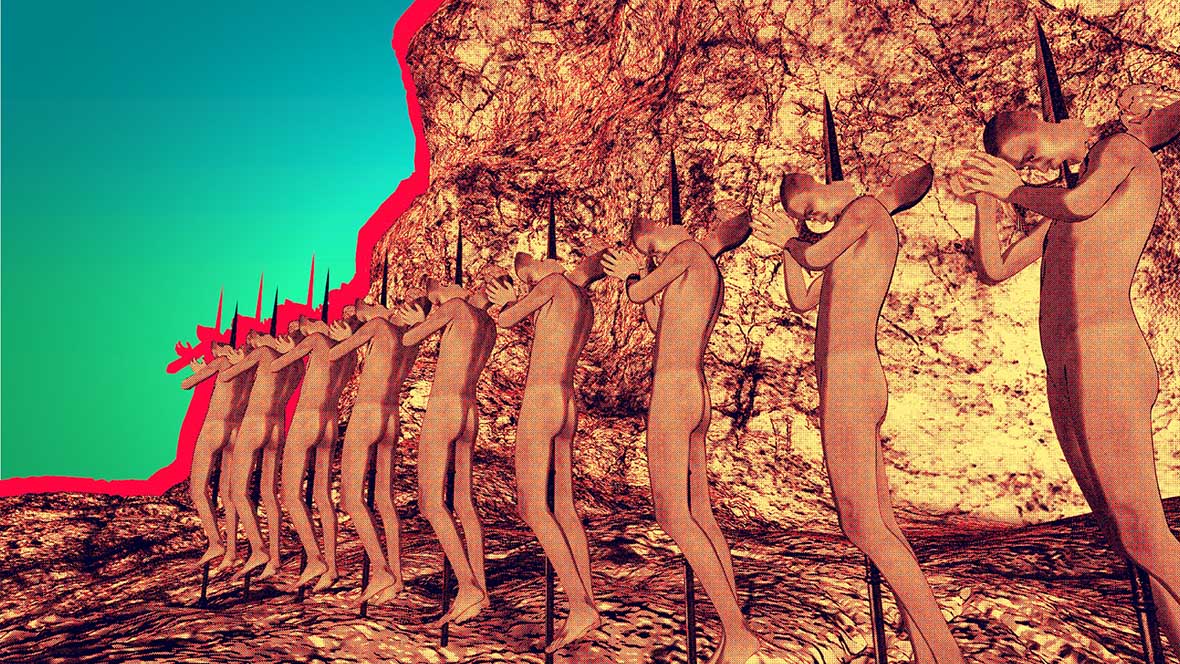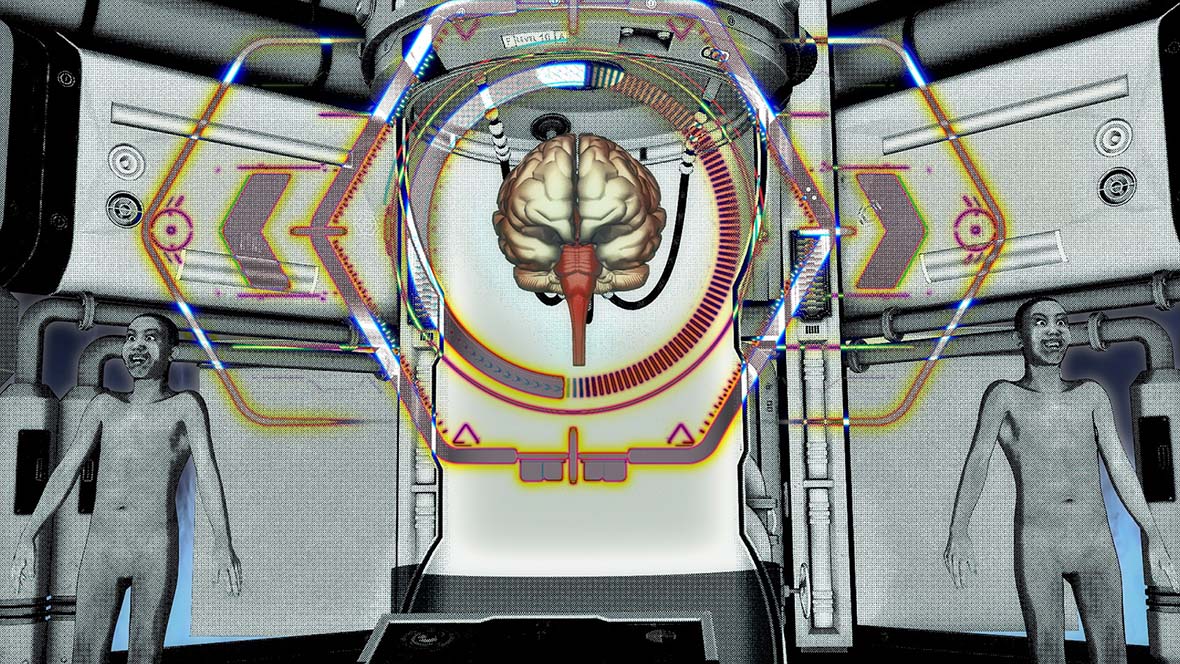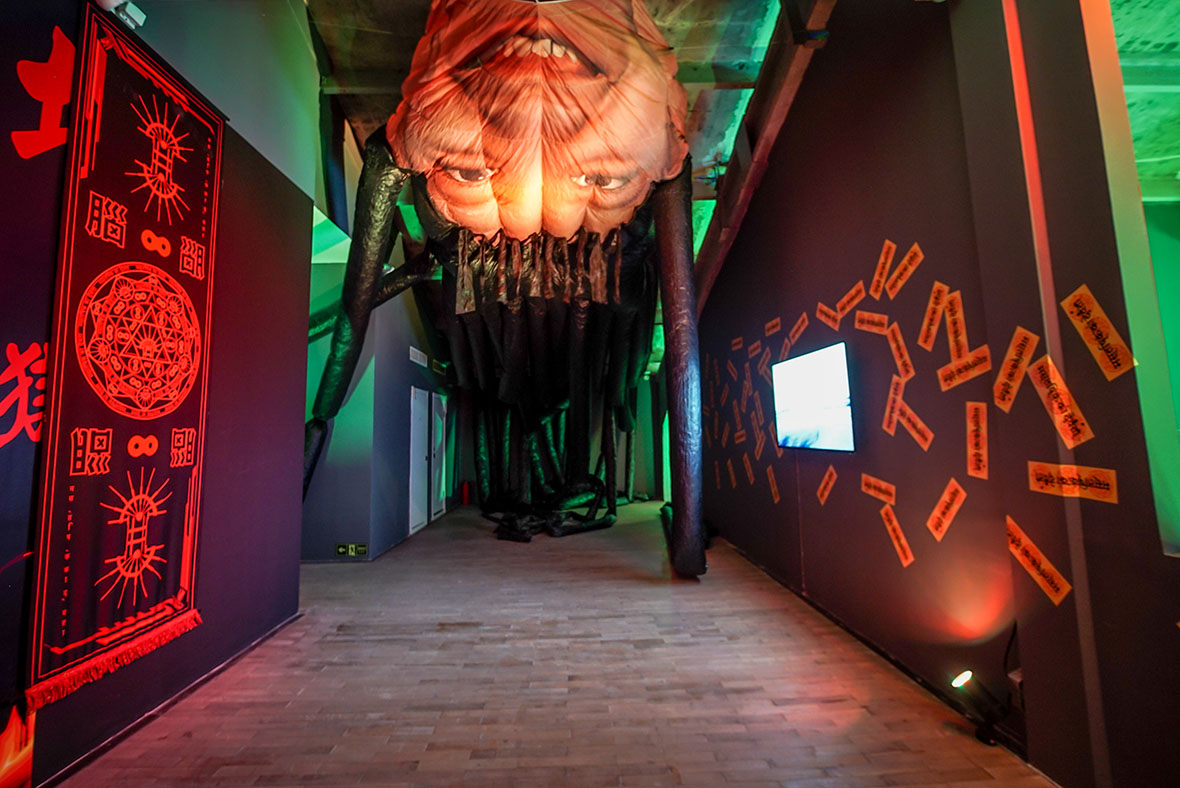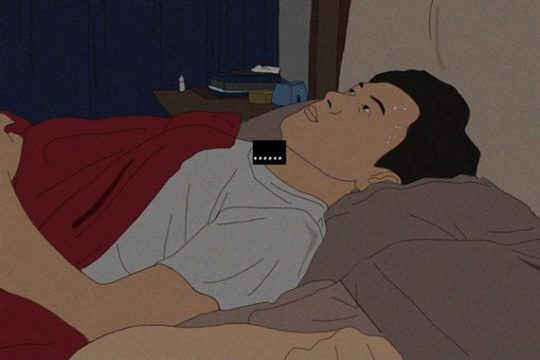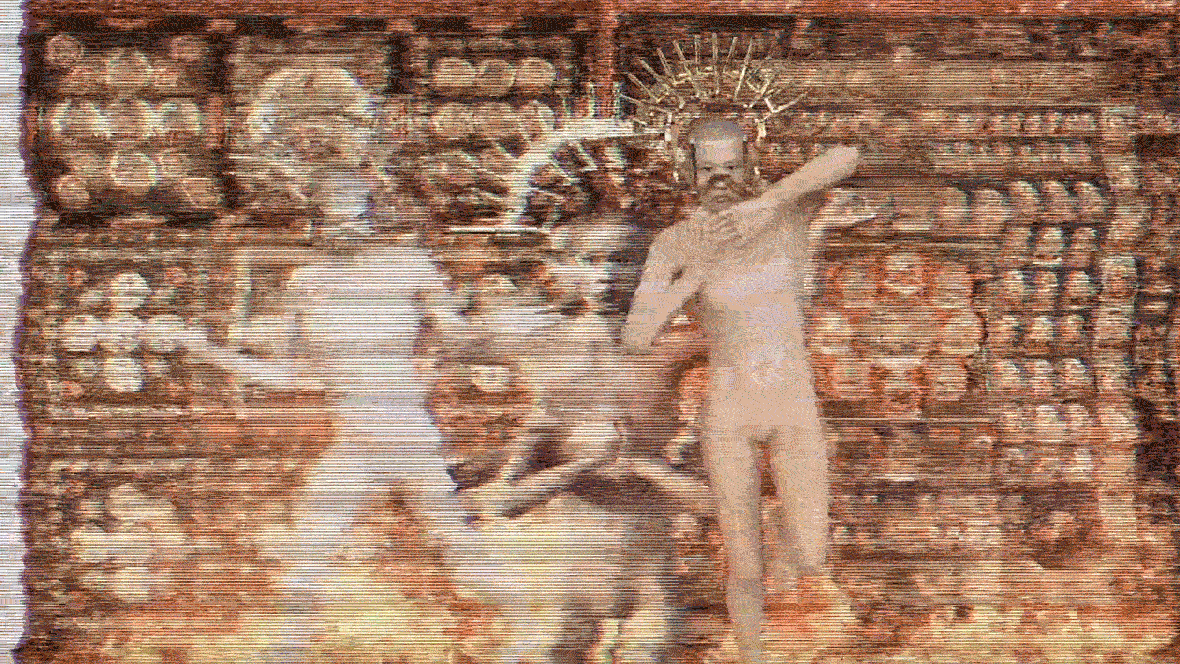
Her works are strange and provocative – she’ll employ a tampon as a skateboard, prescribe artificial nerve stimulation as a means to create mystic states of consciousness, or even choreograph dance sequences using electrical shocks on the corpses of dissected frogs. Born in 1984, new media artist Lu Yang offers a matter-of-fact response to questions about her controversial works: “My works will often incorporate themes of death and illness, but aren’t these things that all living things experience?”
她的作品缤纷诡谲,把生理卫生巾当滑板、用神经刺激模拟妄想状态,甚至把医学解剖后的死青蛙接通电极……这位出生于1984年的新媒体艺术家陆扬,在被问及关于这些近乎禁忌的话题时,只是说:“我作品里面出现很多关于死亡疾病这类信息的体现,但这难道不是我们每一个生物都会经历的东西么?”
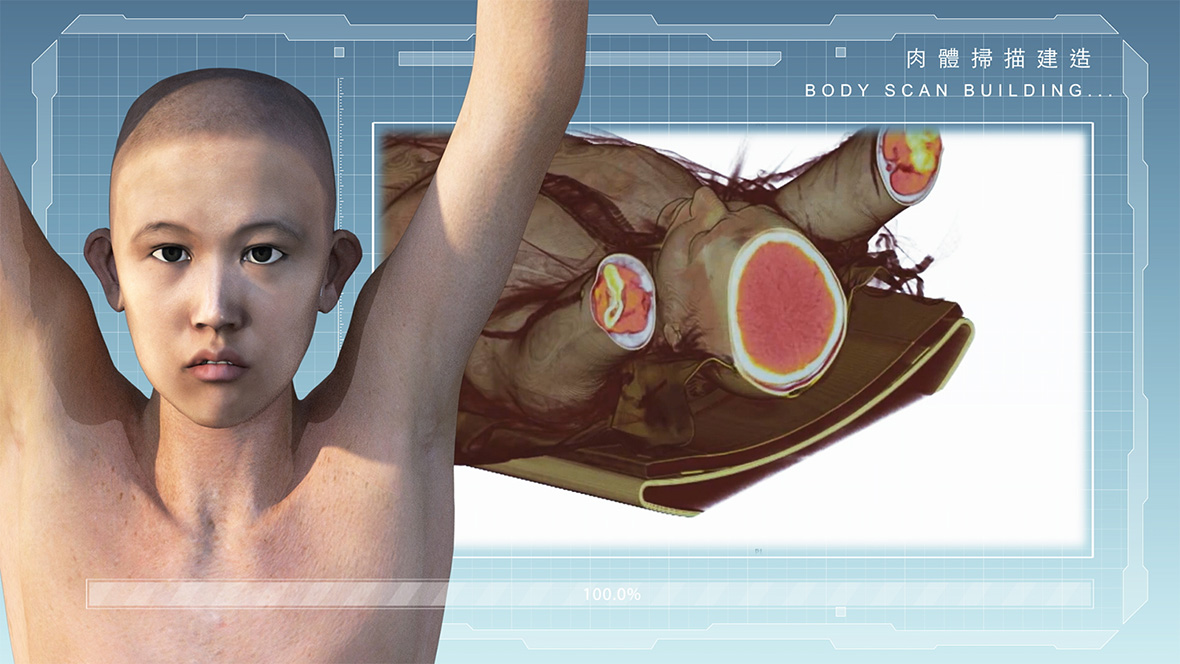
The open discussion of death and dying have strangely become taboo subjects in our world. This cultural norm puzzles Lu Yang, who says her befuddlement is similar to how others are unable to understand why she confronts these taboo subjects. Meshing concepts from science, medicine, art, and religion, Lu Yang creates abormal worlds such as Delusional Mandala, a multimedia work that explores nervous system stimulation and thought control as an examination of death and dying. Much like this project, many of her other works also incorporate a multidisciplinary approach to support her ideas and theories.
奇怪的是,偏偏对这样无可回避的终结问题,人们讳莫如深。陆扬说,这个原因她也不知道,“就像他们不理解为什么我不避讳一样吧。”不仅不避讳,陆扬甚至结合科学、医学、艺术、宗教,来创造了一个“怪奇世界”。《妄想曼陀罗》就是一部这样的作品:通过深部脑刺激,控制情绪和物理思想,进而深入探讨脑死亡。在陆扬的作品中,各个学科交融,各自成为某个理论的辅助理解。
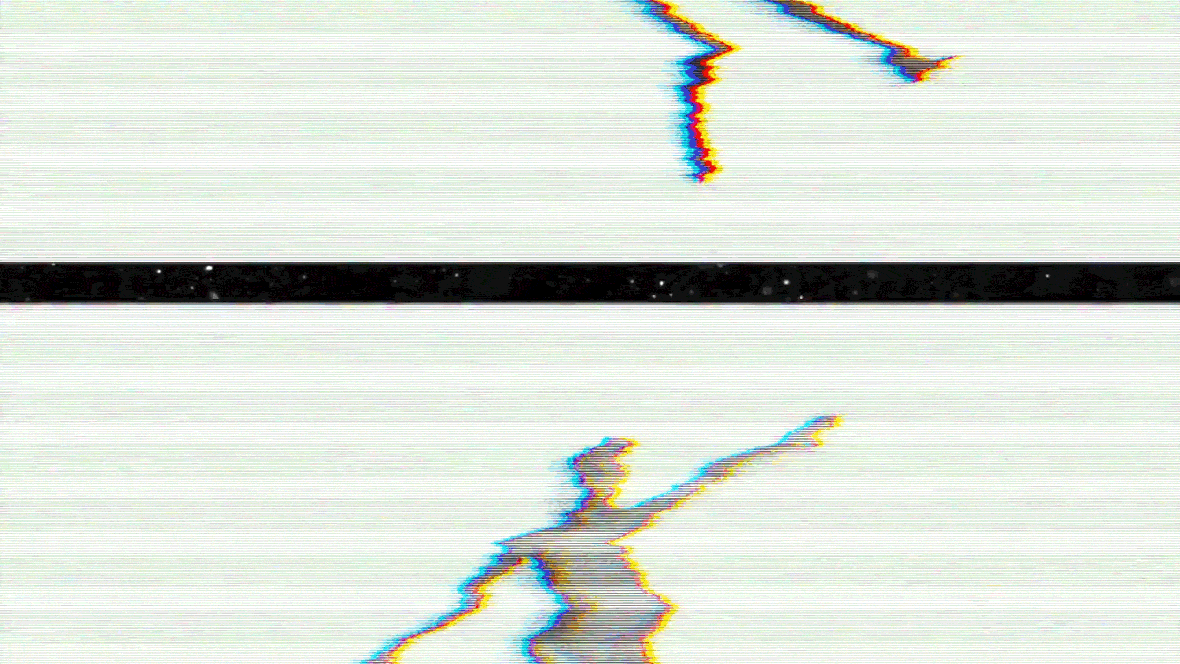
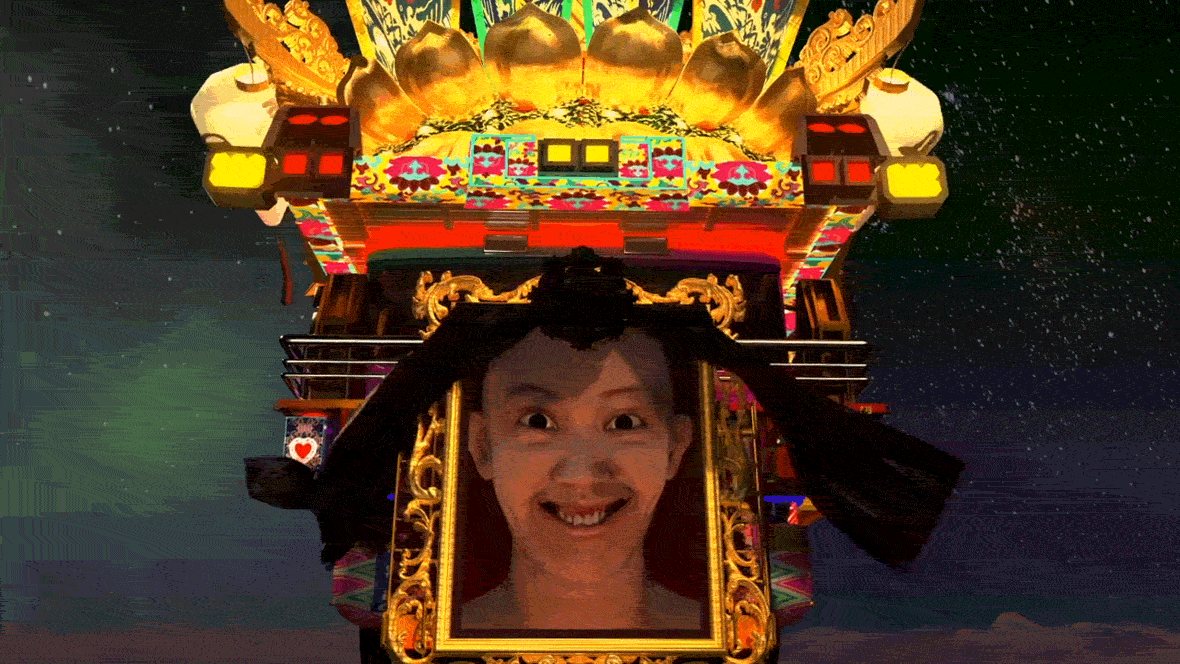
Lu Yang is quite introverted and anxious about social interactions. “Normal” activities like traveling, socializing, or engaging in romantic relationships don’t appeal to her. Instead, she immerses herself in sixteen-hour work days. “Perhaps my brain is just wired to create,” she explains. “Working on a computer has a lot of advantages for me; it complements my personality. I’m an impulsive person, so I’m able to execute my ideas quickly through technology. […] Computers allow me to stay at home and just work. I’m happy that I’m able to be a recluse and also be able to support myself.”
打造出光怪陆离“颅内世界”的陆扬其实挺内向的,非常害怕社交。不论是旅游、交际、谈恋爱,那些大家觉得好玩的事一点都无法满足她。她的工作时长,保持每天在16小时。“可能我的大脑结构就是喜欢做作品的大脑吧。电脑对我来说好处很多,太适合我的性格特征了。我是个急性子,电脑可以很快完成我的想法……而且电脑可以让我宅在家里工作,很开心地当个阿宅但是又能养活自己。”
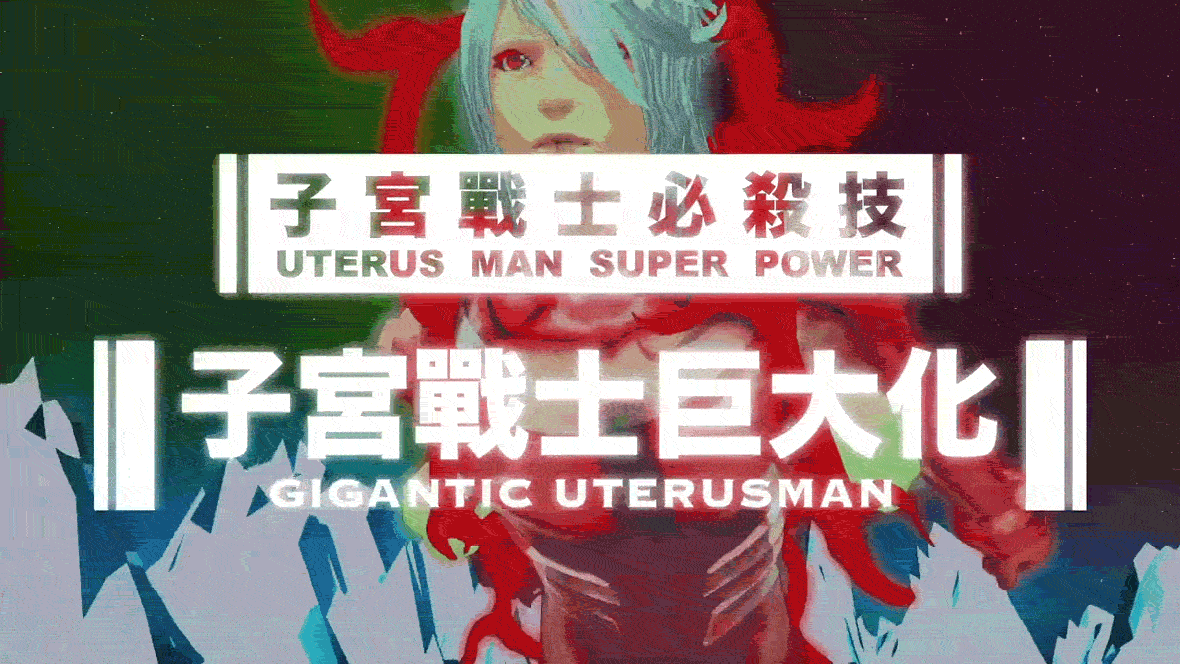
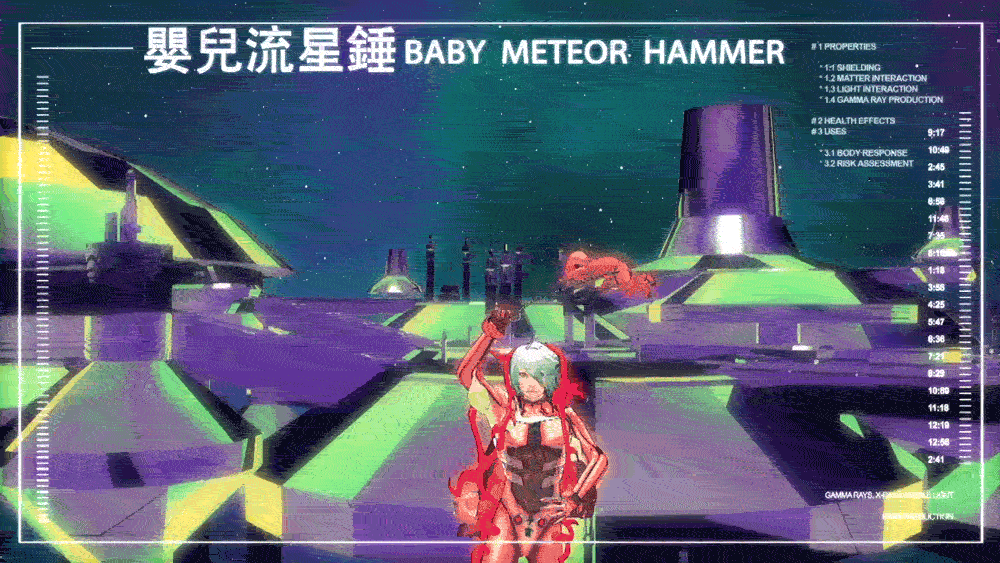
Lu Yang’s creative work has not only given her a passion to work for, but has also brought her new perspectives. Her UterusMan project was created in collaboration with an asexual Japanese individual who succeeded in the removal of their reproductive organs. For the project, they created a sexless superhero that uses an armored uterus shield and reproductive superpowers to defeat enemies. Doing away with traditional concepts of gender, the animation incorporates reproductive science through a groundbreaking and unconventional way.
而做作品本身给了陆扬以激情,也给了她新的角度。陆扬的《子宫战士》和日本一名成功切除了自己身上性器官的无性人合作,创造了一名无性战士作为主角。说是无性,但它又来源于女性体征的“子宫”,使它身披铠甲,以一系列生物遗传功能的“超必杀”孤勇作战。它消除了二元的性别对立,却把更广泛的生物信息科学问题纳入进来。
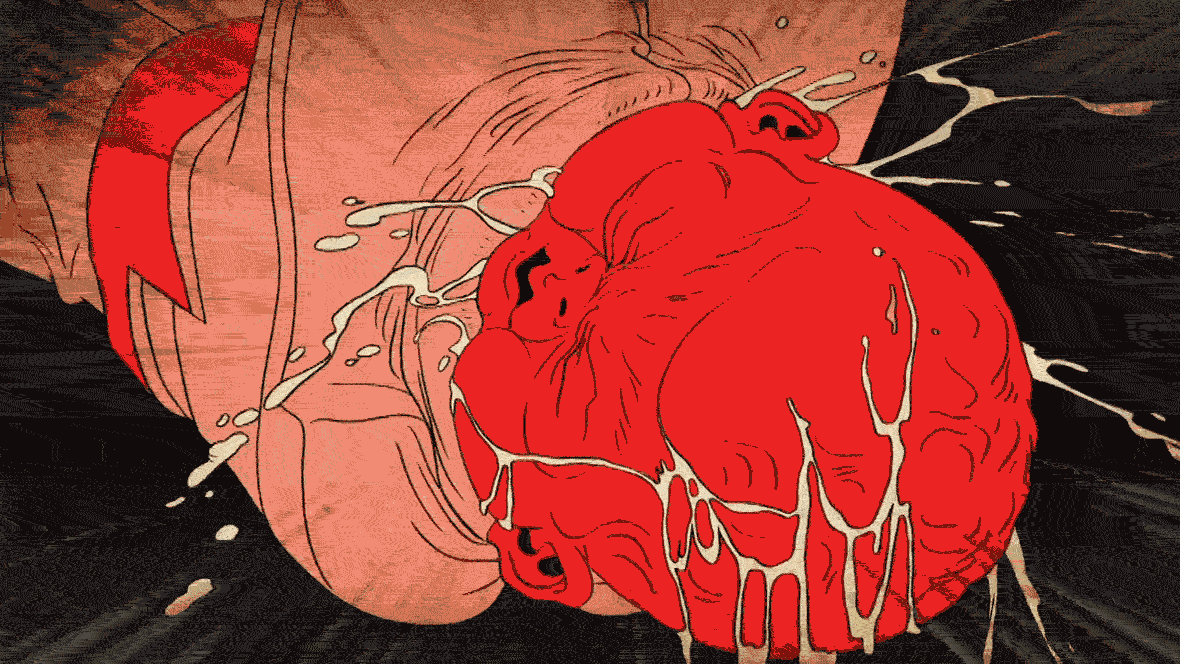
The central theme of many of Lu Yang’s works is an examination of human nature or lack thereof. For example, dead frogs are able to dance when stimulated by electric shock, but this kind of display is completely devoid of human nature. Speaking on the distinctions between animal and man, Lu Yang says, “There are definitely differences. For example, the instinct of morality. But it really depends on what perspective you take. If you look at the distinctions through a human-centric perspective, you can find all kinds of differences, but if you look at it from the perspective of the universe, then maybe there aren’t any differences at all.”
陆扬主要的创作理念,有很多都在试图展现生而为人的“本能”:比如死去的青蛙依然能够通过电极反应抽搐“跳舞”——这样的“本能”其实是消除人性的。关于其中人性和动物性的差别,陆扬说:“区别肯定是有的,比如道德感之类?但是看你这个问题基于怎样的基数上看,如果你从人类中心主义看,肯定可以提出各种各样的道理和区别,但是缩放到宇宙范围去看,那可能根本没差别吧。”
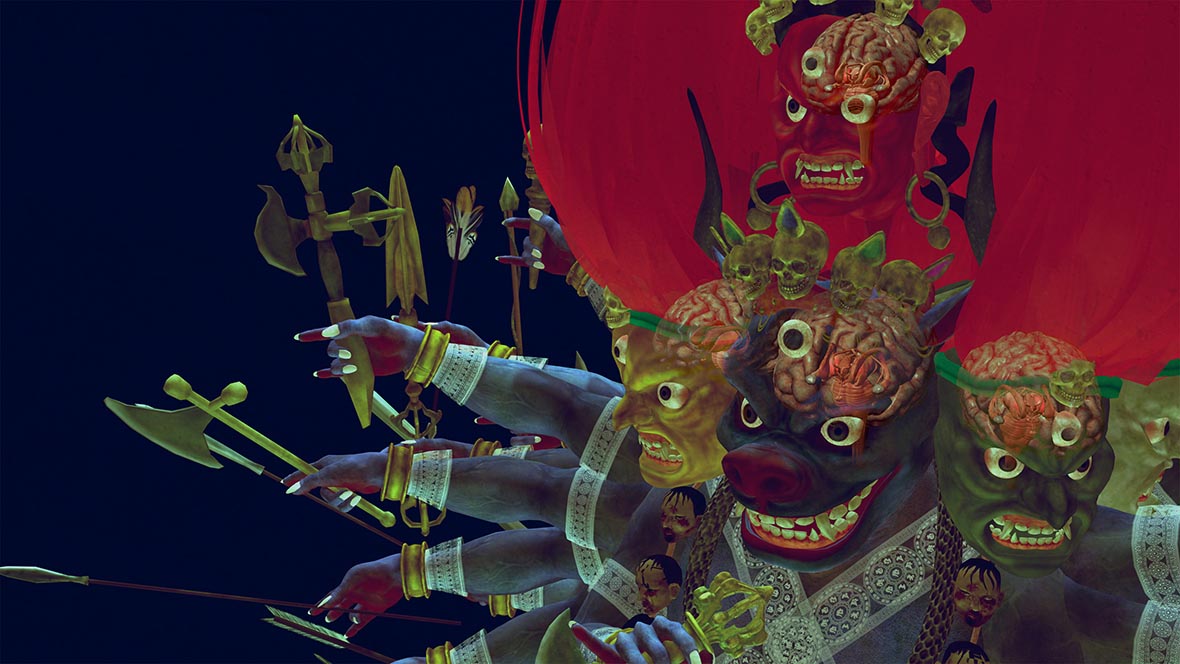
Lu Yang’s work forces us to reconsider our humanism and our preconceived beliefs. She views the world through a detached perspective – for her, art is never done just for the sake of art. “I like to think of these things as works or creative endeavors, I really don’t like to use the word ‘art.’” As for what inspires her, Lu Yang cites a diverse influences, including the likes of manga artist Hiroya Oku, film director James Wan, screenwriter Kankurō Kudō, Japanese writer Osamu Dazai, the theories of behavioral psychologist B. F. Skinner, and various religious philosophies. According to her, “The great works that they have created assist me in building a more prolific inner world. They’ll let you come to terms with the feeling of shame you experience in your shell as a human being. It’s fulfilling for me to explore the inner worlds that I’ve created. Through this perspective, the world is a wonderful place.”
陆扬的作品撇开了人类中心主义,也打破了人们惯常的观看习惯。她的视角很宏观,因为艺术并不仅仅是艺术。“我更喜欢把这些东西叫做创作,作品,我非常不喜欢用‘艺术’这个词。”影响陆扬的大师有漫画家奥浩哉、电影导演温子仁、编剧宫藤官九郎,作家太宰治,行为主义心理学家B.F Skinner和很多宗教大德的理论……陆扬说:“他们这些厉害的作者作品,可以辅助我创造更丰富的内在世界,可以让你抛开自己作为人类没有一副好皮囊的羞耻感,遨游在自己创造的内在世界中也很快乐。从这些角度来说,地球很好玩。”
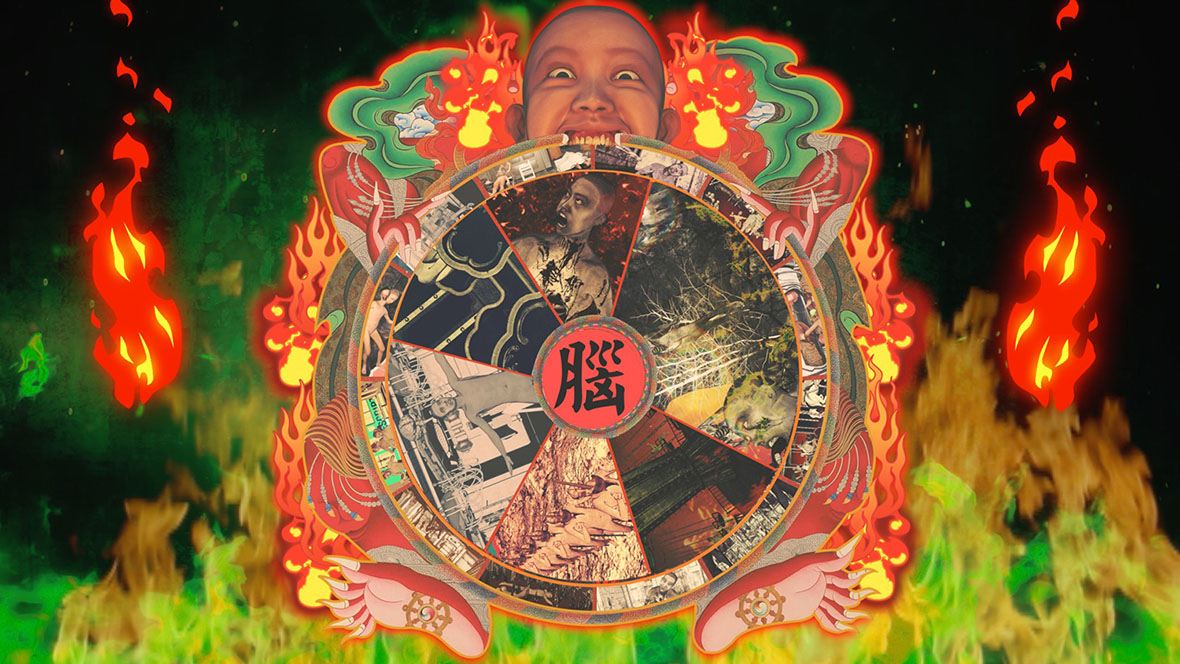
Looking at life from a grander perspective, what is there to fear about birth and death?
Lu Yang’s exhibition, Lu Yang: Encephalon Heaven, is currently on display at Beijing’s M WOODS Museum, see below for details.
的确,跳出地球回头去看,生老病死又有什么可怕的呢?
目前,陆扬这些充满个人风格的作品可以在北京M WOODS – 木木美术馆看到,欢迎大家前往观瞻。
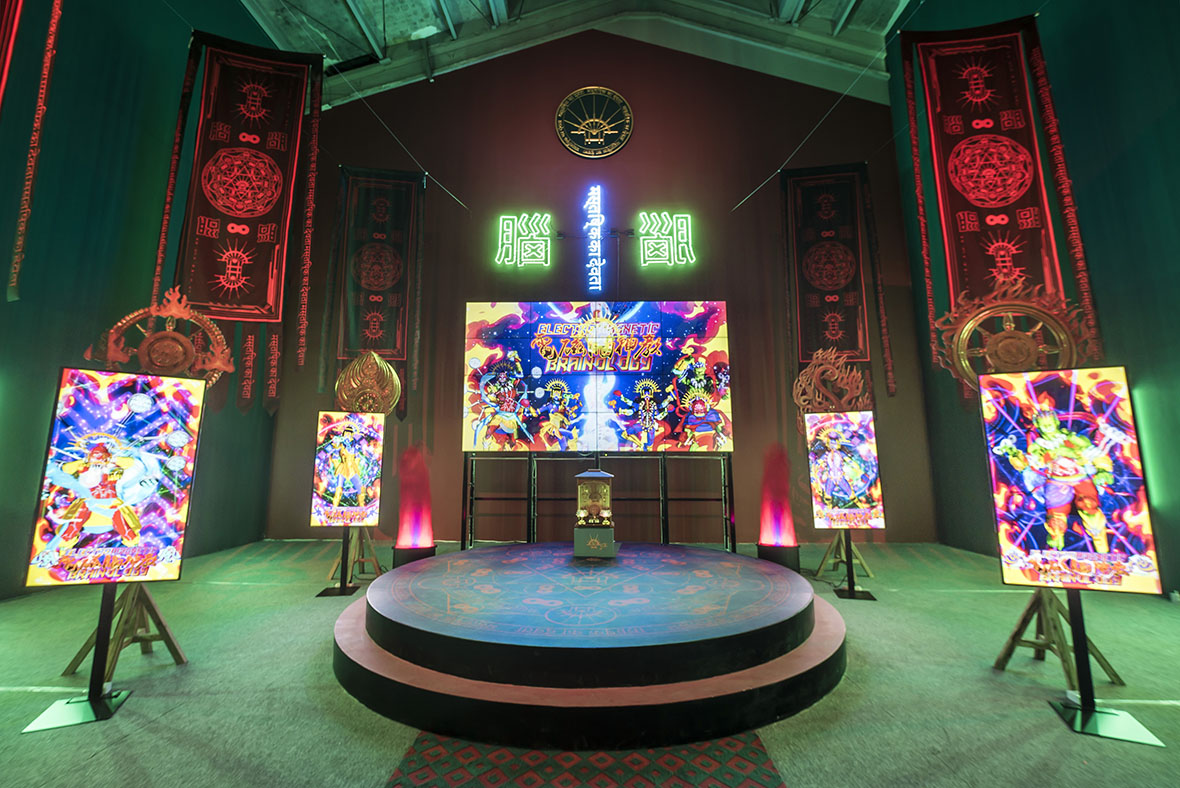
Event: Lu Yang – Encephalon Heaven
Exhibition Dates: October 28, 2017 ~ February 11, 2018
Opening Hours: Tuesday ~ Saturday 10:30am ~ 6pm (Last entry at 5:30pm)
Address:
M WOODS
D-06, 798 Art Zone
No. 2 Jiuxianqiao Road
Chaoyang District, Beijing
People’s Republic of China
活动: 陆扬:脑髓天国
展期: 2017年10月28日 —— 2018年2月11日
时间: 周二至周日 早上10:30 至晚上 6:00(最后入馆时间下午 5:30)
地址:
中国
北京市朝阳区
酒仙桥路2号 中二街
798艺术区 D-06号
木木美术馆

